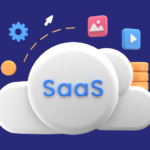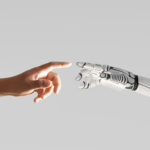Machine Learning Programs’ CEO, Tom Murphy, discusses the benefits of machine learning and how it is revolutionising the insurance industry with actionable insights to help its customers work smarter.

So, what exactly IS machine learning?
Machine learning loosely refers to a collection of techniques and algorithms. The easiest way to explain it is to tell you how it differs from the standard methods used today. (I promise, there is no math or tech in this article!)
In every computer language there are simple statements like: “If A is true then do B, otherwise do C”. The programmer gives the computer a set of instructions and the computer starts at the top and works down, doing what it is told.
If you’ve ever seen a robot repeatedly following its instructions yet oblivious to the chaos it’s creating, that gives you some idea of the brittleness of standard programming techniques. They are really good when you are certain what you want the machine to do; but not so good for occasions where you want it to use some judgement.
How is machine learning different?
Suppose someone is looking at a picture of a cat, or maybe a dog, but they can’t be sure, and they want you to help them determine which it is. I might say “If it has ears, then it’s a cat, otherwise it’s a dog”. But that won’t work as dogs have ears too.
“If it has fur it’s a cat”, wouldn’t work either…. nor does spots, nor the number of legs, nor whiskers. Actually, it turns out it’s very hard to explain to someone how to decide if a given picture is of a cat or a dog. It’s hard to instruct someone else but if you could see the picture, you would easily identify it.
If you think about it, it’s a combination of lots of different things, where no one aspect can be pointed at as being definitive. With these combinations, you can 99.9% of the time tell cats from dogs by looking. It’s subtle, possibly indescribable, but you know.
Since we are not able to describe how to identify one from the other, we cannot program a computer to do this task. The computer is the same as the person looking at the pictures. If you can’t explain how to identify them, you can’t code a computer to do it either.
How does machine learning achieve this?
I take your pile of pictures and the correctly labelled answers, and I then feed them to the machine one at a time with the label as well. Dog, cat, dog, dog, cat. It looks at many features, like furriness, colour, roundness of face, pointiness of ears, size of nose, etc. It puts all this information through its current system however, it gets it horribly wrong. Initially the computer can’t identify between the cats or dogs. It’s never seen a cat or a dog and really it has no idea what they are. All its settings are random so it’s basically guessing.
But it has the answers you provided. It can tell if its decision is right or wrong. By pure chance it will get about 50% of them right and about 50% wrong. When it gets it right, the program goes back and strengthens the way it decided on the right answers. Whatever way it reaches that conclusion, it will give that method greater weight in the future. Inversely, when it guesses incorrectly, it reduces the weight/importance of that approach.
After many iterations of this self-adjustment, the computer learns how to identify cats from dogs reliably and without a single line of code referring to either.
Over trial and error (and an exceptionally large amount of data) it figures out the tiny details that we humans pick up on and recognise. Things we cannot even describe ourselves.

So how does this apply to insurance?
Imagine cats are insurance claimants and dogs are excellent drivers. Or cats are fraudsters and dogs are honest people. Feeding a large amount of data with answers to a machine learning algorithm allows it to pick up on the subtle, possibly indescribable, details and trends which identify one from the other. Turns out, computers are rather good at it too.
For years we have tried to describe what a good risk looks like. We make our best attempt at it and accept that it is a hard thing to explain concretely to a computer. For years we have discretely said “if A then do B, otherwise C”. But humans are not good at describing bad risks to computers.
As automation ramps up and aggregators grow, consumers are looking for quick insurance covers. Automating risk selection is required but we’re still bad at describing good risks. Machine learning is a better approach, and we can show you case studies from customers in production to prove it.
Where does Open GI come into this?
Remember when I said we needed a lot of data. Millions upon millions of rows. And correctly labelled answers? OGI sits at the nexus of anonymised data streams: aggregator data, quote data, risk data, sales data. And there is valuable, useful information in those data streams.
MLP is now a member of the OGI family, although we are operating as a separate entity with our data scientists and sales force. So, if you want to dig deeper into the benefits of machine learning and how it might be applied to your business, we can help you.





